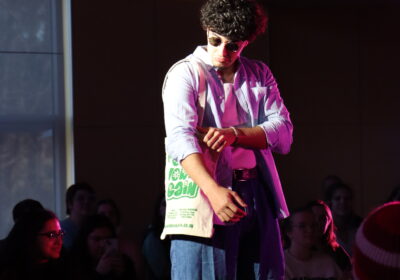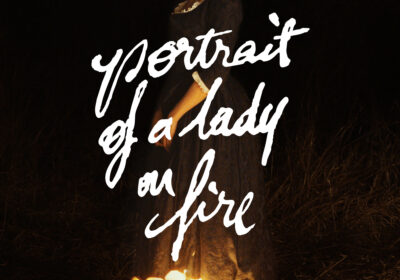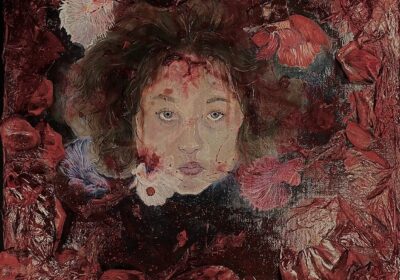Yoda huts

Nestled away in a hidden clearing behind the Fine Arts Center, what looks like a huge clay igloo wears a fresh coat of blue paint. Piles of severed branches lay around the clearing and the patch of trees separating the space from the Rail Trail shows signs of path building.
Few students at Castleton University know about this area, but sophomores in the Creation & Creativity course have started calling the mysterious sculpture there the “Yoda hut.” Few of them knew this thing existed before this semester, but they’re now taking an active role in shaping its future. They’ve been ripping moss off of it and applying that paint for a whole class period once a week, bright and early at 9:30 in the morning.
This isn’t the kind of classwork students are used to, but Creation & Creativity isn’t the kind of course they’re used to either. Professor Oliver Schemm, a sculptor who’s been involved in dozens of art exhibitions using repurposed materials, is instructing the course. He has built quite a portfolio of creative pieces and wants to share some of his findings through a course he described as an exploration of the “creative and artistic aspect of creation.”
Zach Wright, a sophomore taking the course, admitted he was surprised that the activity was mandatory classwork for an honors course. The work is closer to a community engagement activity – which is usually done by students on a volunteer basis.
“I expected it to be a lot of lecturing,” Wright said.
He doesn’t seem to mind that it isn’t.
“Honestly, I’d rather be doing that in the morning than sitting in class and being tired or falling asleep,” he said.
Repurposing this strange sculpture falls pretty close to the values expressed in Schemm’s own artwork. When asked why the project appealed to him he said, “When I come to a place that I find has not been cared for in a long time, I have a desire to fix it up – to make it where it was, if not better. Just because something is old and used up doesn’t mean that it’s done.”
Expert opinions discussed in class teach that creative thinking involves the personal repurposing of ideas into something new, interesting, and useful. The students might not have to think creatively to do their tasks, but Schemm has been clearly displaying creativity in class.
He isn’t afraid to get his hands dirty with the class. He’ll don full protective gear and use a chainsaw to remove particularly stubborn stumps, modeling “adaptability, problem solving, and the capacity to grab onto difficult problems,” – values he’s hoping the class will inherit.
What does it mean for these students if these behaviors and traits rub off on them? Schemm lit up when he heard the question.
“I find that to be an incredibly hopeful and promising thing,” he said. “Then our species has hope.”
As it turns out, the class’s efforts will benefit future classes here at Castleton University too. A course focused on Zen Buddhism, instructed by Professor Brendan Lalor, will use the area for gardening exercises that have been integrated into the curriculum, Schemm said.






